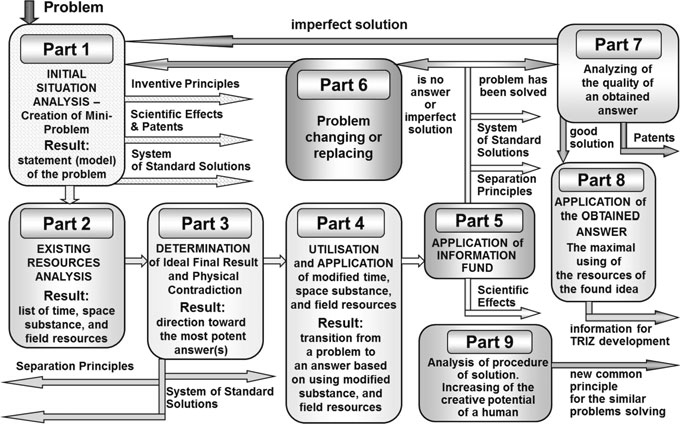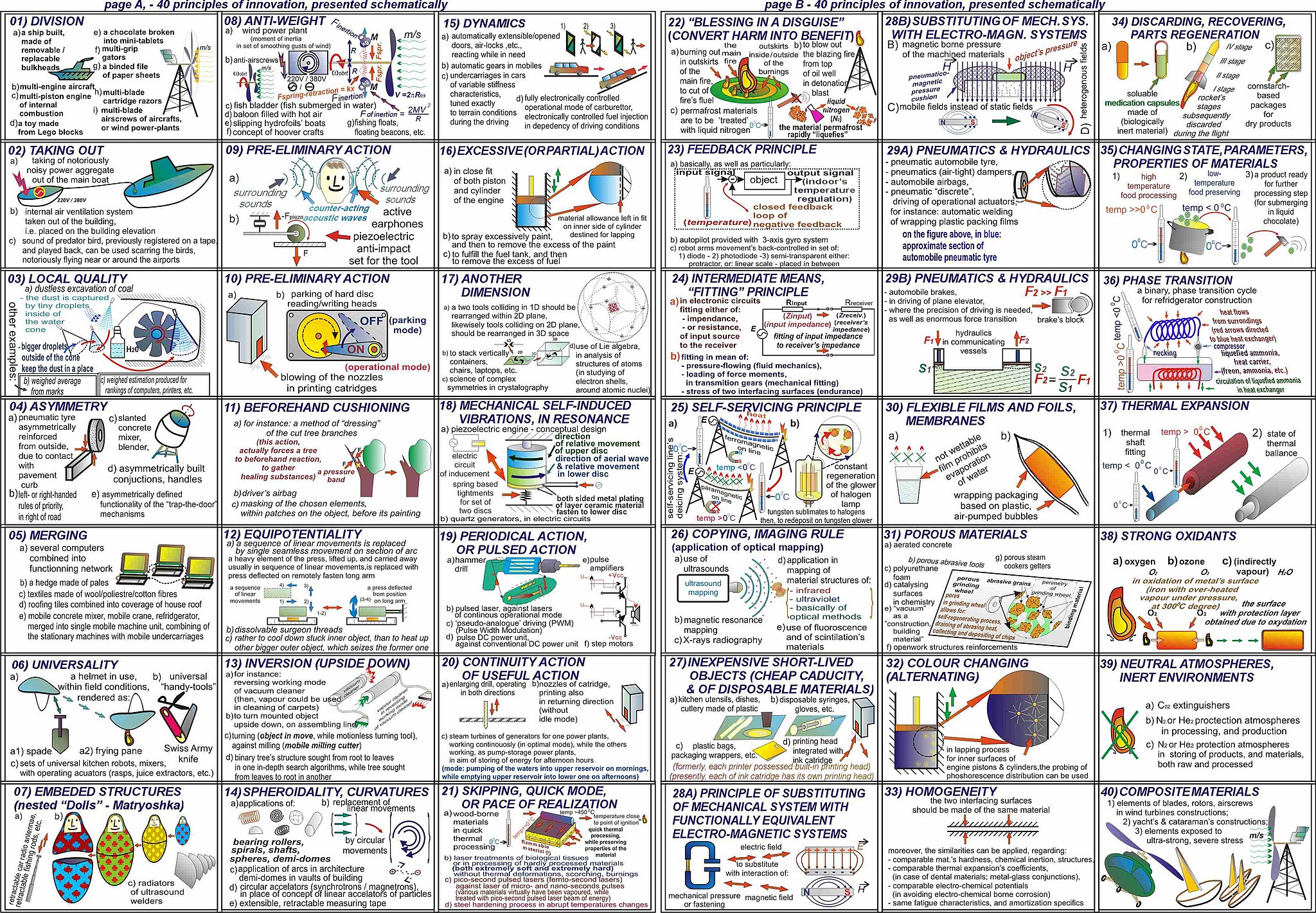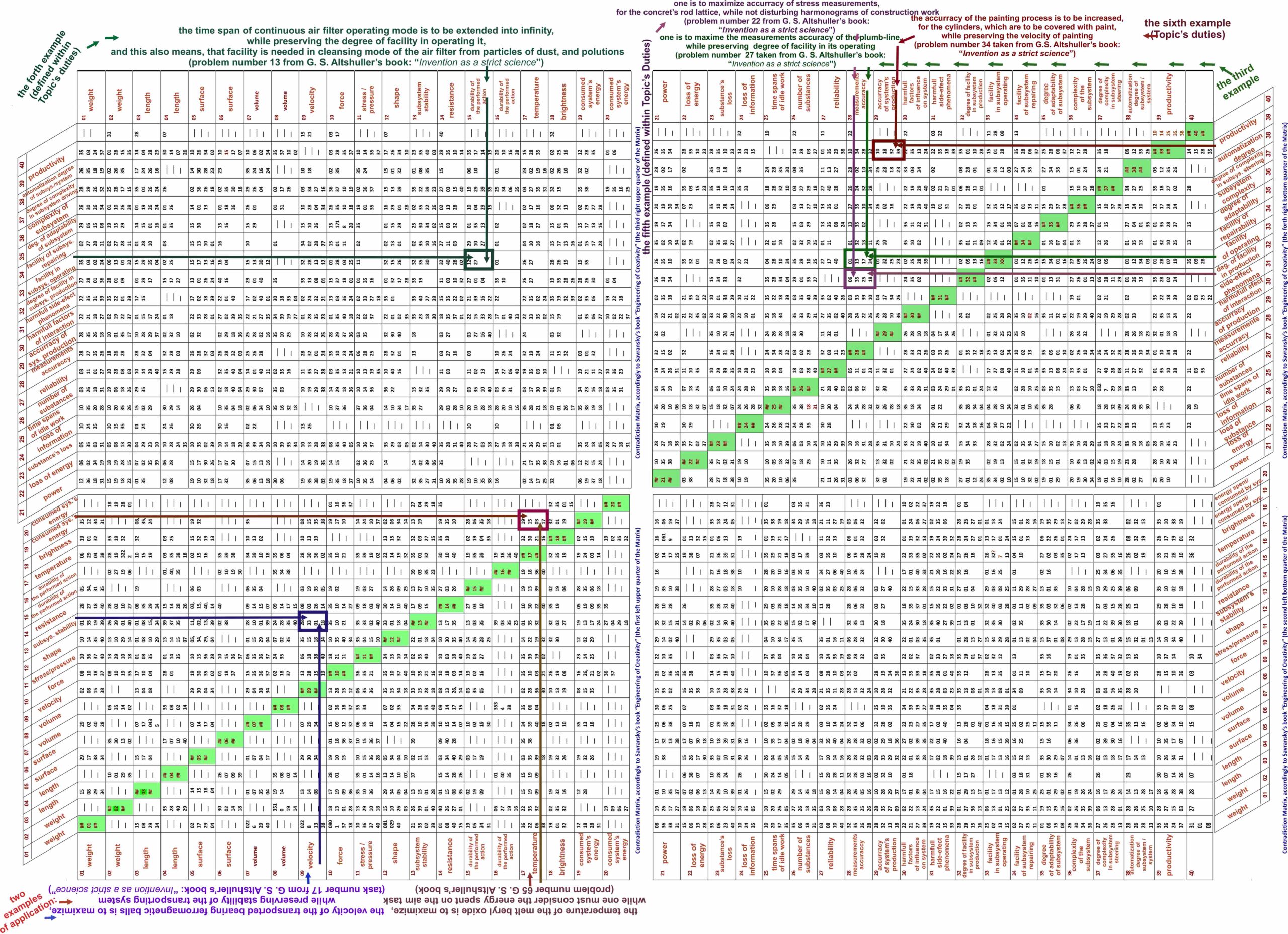Key principles and the toolset discussed in the introduction to TRIZ find their structural expression in ARIZ. ARIZ is a 9-step process, which is based on the laws of technical system evolution. The abbreviated name, ARIZ, comes from a transliteration of the name in Russian, Algoritm Resheniya Izobretatel’skikh Zadach. Unlike conventional problem-solving methods, ARIZ targets inventive solutions that break through typical constraints, leading to solutions that may not be obvious through traditional trial-and-error approaches. Its purpose is analysis and resolution of inventive challenges. It is the core tool of the TRIZ, and provides a structured and systematic approach to innovation in the field of mechanical engineering. The first mentioning of ARIZ dates back to the first edition of the book “Invention algorithm” by G. Altshuller published in 1969 by the “Moscow worker” although the first version dates back to 1956 (Bukhman, 2021, p. 385). After that the further iterations of ARIZ were indexed by the year of publication, e.g. ARIZ-68, ARIZ-71, ARIZ-82 (Altshuller, 2011, pp. 158, 221). The latest iteration of the algorithm is ARIZ-85C, which adds to the year index and the iteration version (Altshuller, 2011, pp. 237–274).
The ARIZ-85C algorithm consists of nine detailed steps, each building upon the previous one to move from problem definition to solution synthesis (Altshuller, 2011, p. 165). In addition to the conventional steps, we add the Step 0 as the part of the ARIZ-85AS iteration (Savransky, 2000, p. 315). These 0-9 steps are fragmented in smaller steps to add clarity and structure to the workflow. They are namely (Savransky, 2000, p. 315; Altshuller et al., 1989, p. 105):
- Step 0. Collection of information
- Step 1. Analysis of the task – initial situation;
- Step 2. Analysis of the model of the task – existing resources;
- Step 3. Identification of the Ideal Final Result and physical contradictions;
- Step 4. Utilization and application of the S-Field analysis/resources;
- Step 5. Application of the informational fund;
- Step 6. Change and/or replacement of the task;
- Step 7. Analysis of the ways to eliminate the physical contradictions;
- Step 8. Application of the generated answer;
- Step 9. Analysis of the solution flow.
Over the years, the algorithm has developed from a set of 4 steps in its early version into a complete algorithm of 9-steps which are split into 40 sub-steps and 3 phases (Acker, Braesch, Dumangin, Lauth, Essaid, & Cavallucci, 2020, p. 145). Schematically, the basic workflow using all TRIZ elements is presented on the image below. If you find it complex and overwhelming, it is. If you find it hectic, watch your team trying to innovate without any “hectic” structure. So, the first step is collection of the required information and definition of the initial situation, creation of the mini-problem. The workflow can be both linear sequentially following the procedure from step 1 to 9 or, once the problem is defined, take any other pattern as long as it leads to a solution.

Continue reading “Steps of the algorithm for inventive problem-solving, ARIZ”

